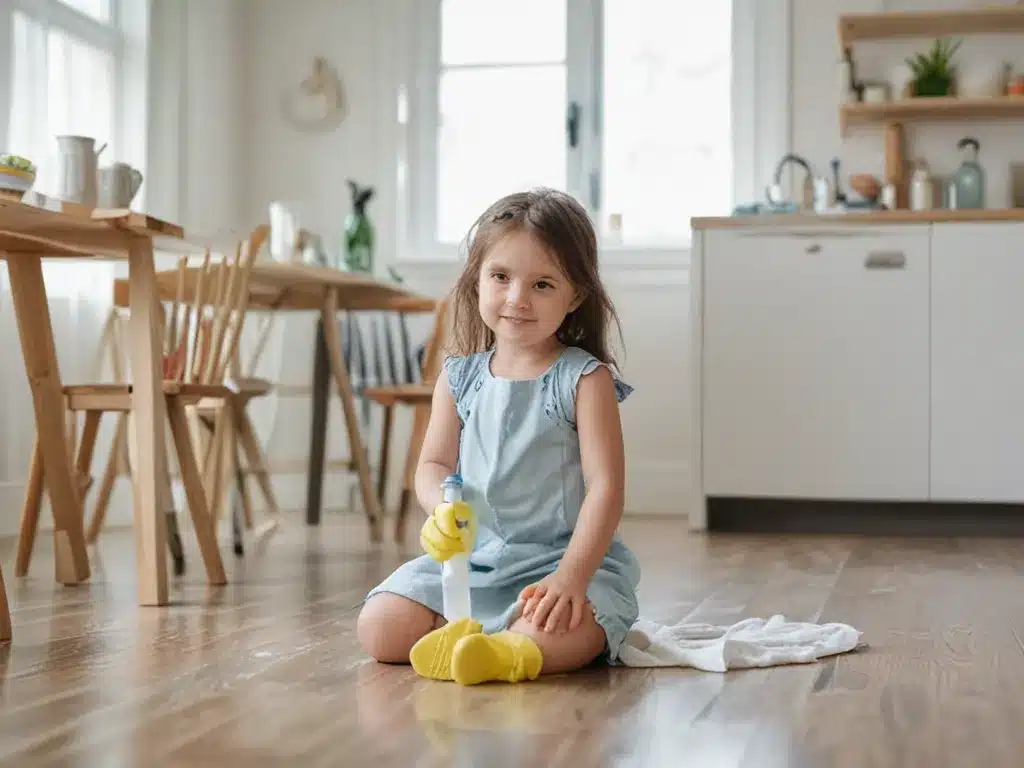Introduction
As I try to keep my home clean and sanitized during this pandemic, I’ve become increasingly concerned about using harsh chemicals that could be harmful to my family’s health. That’s why I decided to look into alternative, non-toxic disinfecting methods that can get rid of germs and viruses without putting my loved ones at risk. In this article, I’ll share what I’ve learned about safer sanitizing through natural disinfecting solutions and techniques.
Dangers of Conventional Disinfectants
Many common household cleaners and disinfectants contain ingredients like bleach, ammonia, formaldehyde, and ethanol that can irritate lungs and eyes. Prolonged exposure to these harsh chemicals has been linked to allergic reactions, asthma, and other chronic conditions.
While chemical disinfectants do kill germs effectively, I worry about the toxic residues left behind that my toddler could ingest. Powerful fumes can also compound respiratory problems. As a pregnant woman, I want to avoid anything that could harm my developing baby.
That’s why I sought out gentler, non-toxic alternatives to sanitize my home. The good news is there are lots of simple, natural disinfecting solutions that can eliminate bacteria and viruses without risky chemicals!
Vinegar as a Natural Disinfectant
One of the most effective natural sanitizers is plain white vinegar. Acetic acid in vinegar can kill 99% of bacteria, 82% of mold, and 80% of germs and viruses. A vinegar cleaning solution is easy to make at home.
- Mix 1 part vinegar to 1 part water in a spray bottle. For heavily soiled areas, use undiluted vinegar.
- Use the solution to wipe down counters, sinks, non-porous floors, toilets, doorknobs, and other germ hotspots.
- For fabric sanitizing, add 1⁄2 cup vinegar to the laundry rinse cycle. The acidic vinegar will destroy bacteria and remove odors.
Vinegar disinfects without leaving any chemical residue. It’s inexpensive, non-toxic, and eco-friendly. The tangy smell of vinegar dissipates quickly once surfaces are dry.
Disinfecting with Hydrogen Peroxide
Hydrogen peroxide is another powerful yet safe natural disinfectant. At 3-5% concentration, hydrogen peroxide can eliminate viruses, bacteria, and fungi. Follow these steps to use it:
- Mix a solution of 1 part 3% hydrogen peroxide to 2 parts water.
- Spray or wipe on surfaces and materials that are stain-resistant and colorfast.
- Let stand for at least 1 minute before wiping dry with a clean cloth.
- Repeat treatment weekly to disinfect ongoing problem areas.
Hydrogen peroxide breaks down into water and oxygen, so it won’t leave behind any toxic residue. It’s也 very affordable and versatile for household disinfecting needs.
Other Non-Toxic Sanitizers
Essential oils like tea tree oil, thyme oil, clove oil and oregano oil also have natural antiviral, antibacterial, and antifungal abilities. Add several drops to vinegar or hydrogen peroxide cleaners for an extra disinfecting boost.
Lemon juice has acidic, antimicrobial citric acid that cuts through grease and kills germs. Mix equal parts lemon juice and water to make an effective sanitizing spray.
Baking soda is a gentle abrasive that can remove grime. Make a paste with water to scrub surfaces. Rinsing with vinegar afterward provides disinfecting acidity. The chemical reaction between baking soda and vinegar also lifts away soap scum and stuck-on gunk.
Safely Sanitize Soft Surfaces
Carpets, furniture, stuffed toys and bedding can harbor germs and allergens. To sanitize these soft, porous surfaces:
- Vacuum upholstery and carpets thoroughly to lift dirt and debris. Use vacuum attachments to deeply clean crevices.
- Sprinkle baking soda liberally on surfaces. Let sit for 15 minutes before vacuuming again. The baking soda will absorb odors and moisture that breed germs.
- For washable items, add 1⁄2 cup vinegar or tea tree oil to the rinse cycle. Air dry in sunlight, which naturally sanitizes.
Rotate plush items that aren’t washable through the freezer, which kills dust mites and microorganisms. Place stuffed animals and pillows in a sealed bag in the freezer for 24-48 hours.
Maintaining Proper Hygiene
While keeping my home sanitized helps prevent illness, following good hygiene practices is also essential. Washing hands frequently with soap and water is the number one defense against contracting and spreading germs.
I make sure to scrub hands for at least 20 seconds, cleaning under nails and between fingers thoroughly. Drying hands completely afterward also helps remove germs.
Using hand sanitizer when soap and water isn’t available is a good portable option. Make sure sanitizers contain at least 60% alcohol to effectively eradicate germs.
Conclusion
After learning about various natural disinfecting solutions, I feel empowered to sanitize my home without using harsh chemicals. Products like vinegar, hydrogen peroxide, and other non-toxic sanitizers can eliminate dangerous germs and viruses without exposing my family to hazardous fumes or residues. Combining these all-natural cleaners with good hygiene practices will help me maintain a healthier, safer home environment.







